| 1 | A lightning fast southern snake |
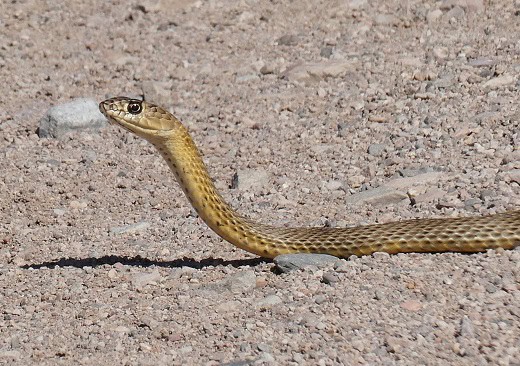
You’re sitting on a dusty porch in Arizona, drinking a beer. The sun is setting, and you’re gazing out at the dusty, parched landscape before you. Suddenly, a thin object blasts past, so quickly that you barely have time to react. All you can realise in this split second is that the object was probably a snake, but it leaves you wondering for days what the creature actually was, and whether your house might soon be invaded by hordes of angry snakes.
If this event has ever happened to you, then that species was almost certainly the coachwhip, AKA Masticophis flagellum. This species inhabits every single southern state of the USA, from west to east. It’s a non-venomous semi-constrictor which charges down its prey and grapples with them in its coils. Most importantly, the coachwhip is reputed to be the fastest of all US snakes. Their top speed is regarded as being 4mph/5.8kph, and in many videos they look significantly faster.
Coachwhips aren’t just freakishly fast, but produce a sudden burst of speed from nowhere. As this video shows, they can change from being stationary to blasting into undergrowth like a bullet being fired.
Coachwhips are also exceptionally thin, which adds to the impression of speed. Alongside the African black mamba, the coachwhip is believed to be one of the fastest snakes in the world.
| 2 | The USA’s 3rd longest snake |
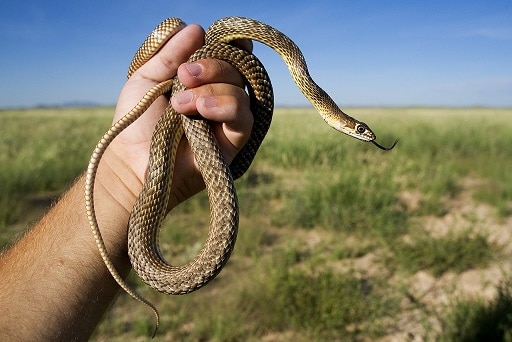
The coachwhip is one of the southern USA’s most common snakes, as they’re native to 22 US states out of 50. They cover a complete span of the USA from east to west, but disappear the more steadily north you travel. For example, coachwhips are found up to central California on the west coast, but aren’t present in Oregon. On the east coast, they’re present in North Carolina, but aren’t found in Virginia.
Coachwhips also plunge deep into Mexico, reaching just a few hundred miles north of Mexico City. In Texas, Florida or Oklahoma, there’s barely one county of the state where they don’t live.
Coachwhips are easily the most common of their Masticophis genus. This has 11 members overall, with 6 species living in the USA, but the coachwhip is the only member found east of Texas. The second most common member is the striped whipsnake (Masticophis taenitius), which inhabits 10 westerly states, and reaches much further north than the coachwhip, entering Oregon and Washington.
At a regular length of over 2 metres, the coachwhip outstrips all 32 species of North American rattlesnake. The coachwhip doesn’t quite match the longest US snake for size, the gopher snake snake, but they’re well up there in the ranks. The eastern diamondback maxes out at 251.5m, while the longest coachwhip on record measured 257cm. This makes them the third longest US snake, with the eastern indigo snake ranking in second.
At birth, coachwhips measure 27.9-35.6cm, before growing steadily for the rest of their lives. Their lifespan is around average for a snake, at 13 years in the wild.
| 3 | Pursues humans for miles? |
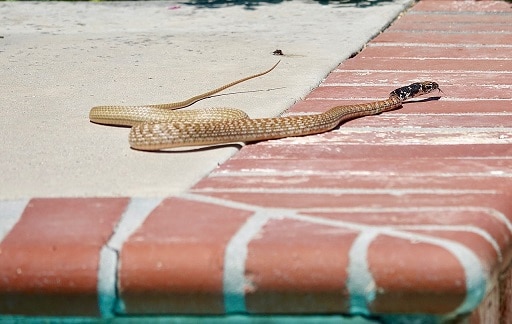
The coachwhip is a snake of endless myths and legends, and the main one is connected to its speed. Across rural America, whispers persist that a disturbed coachwhip will chase a human down for miles and miles, travelling far over dusty plains, never giving up the chase. When it finally catches up, the coachwhip will coil itself around the human’s body, before whipping its captive from head to foot, using its entire body to deliver a storm of repeated lashings.
The coachwhip will then stick its tail up the victim’s nose, to carefully check whether he or she is still breathing. Finally, the coachwhip will swallow the captive human whole, headfirst.
A large percentage of old pursuing snake stories originate from the coachwhip. Doubters point out that the coachwhip cannot outrun a human, or that using itself as a whip would actually cause severe internal damage. They point out that if you picked up a snake by its tail and lashed it (which has unfortunately been tried), the snake would not survive. Our verdict: probably not true, but the USA is a big place, and anything is possible.
| 4 | The story that refuses to die |
Tales of vicious whippings were already widespread by the 1940s, as the account of one A.C. Simpson shows. He wrote in Antivenin Bulletin that he was followed for a quarter of a mile by an unusually long coachwhip near some semi-tropical thickets. The snake had its head raised two feet above the ground, watching him carefully, and every time he looked back, the coachwhip would be in the exact same position.
Before long, a second coachwhip appeared. Simpson moved towards the snakes to spook them, which worked briefly, but he soon noticed the tall blades of grass behind him rustling violent. “I then knew that I was being chased, by the terrible lash which, according to tradition, would soon overtake me, wrap itself about my body, and thrash me with its tail until I died in terrible agony“. His account ends with him heading for a tree.
Was he trying to increase antivenom sales by inciting fear, or did Simpson witness the true power of the coachwhip. Nobody knows, as he was the only person there. Biologists were already scathing about the theory in 1949: “Why the whip snake desires to torment human beings, and what happens to them upon death, has never been made clear in the mythology of the subject”.
| 5 | Savagely defends itself |
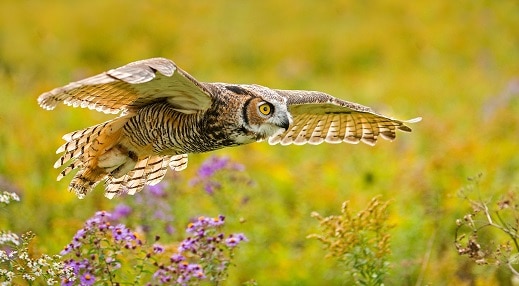
Coachwhips are extremely fast, but they’re still non-venomous. Fortunately, they have one of the most relentless and brutal escape strategies of any snake. When a hungry hawk or great horned owl closes in, the coachwhip will first stay absolutely still, allowing its camouflage to take effect. If the bird sees through this disguise, then the coachwhip will flee at high speeds.
Coachwhips are not only lightning fast, but able to make short, sharp turns without slowing down at all. The coachwhip will bite at the predator while being pursued, even shaking its tail as a warning. If all seems lost, then the coachwhip will escape into a dark mammal burrow. This is when the brutality kicks in, as the coachwhip instantly makes a sharp 180 degree turn, so that its head is now facing the burrow entrance again.
When the hungry predator pokes its head in, the coachwhip is now in the correct position to deliver a sudden bite to its face. As its teeth sink in, the coachwhip thrashes its head from side to side, tearing the bird’s flesh into a grisly mess, forcing it to flee in pain. This brutality is to compensate for the total lack of venom.
Coachwhips act similarly when picked up, thrashing and biting savagely, before curving around a wrist to stabilise themselves. This can make the coachwhip extremely hard to dislodge.
According to a 1967 paper, “The ability of this snake to escape capture is unparalleled“.
| 6 | Extremely resistant to heat |
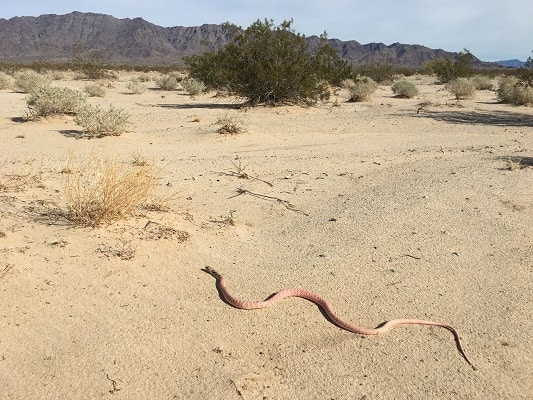
Coachwhips can appear in many habitats, but the quality that unites them is being wide and open, rather than dense and claustrophobic. They prefer relatively dry spots, but not parched, arid deserts. Areas you might find a coachwhip include farmlands, scrubland, semi-deserts, prairies, woodlands (though not dense forests), sandhill scrubs and coastal dunes.
For example, a study in Florida examined both the availability of habitats, and how commonly coachwhips appeared in them. There was a clear discovery: coachwhips never appeared in marshes or swamps, despite them being readily available. They appeared in spacious pine flatwoods and pasture land in fairly similar proportions to their availability. However, their favourite habitat was easily scrubland, which they appeared in well beyond its availability. Similar results have been found in Texan studies.
Coachwhips also have no qualms about venturing into towns or gardens. They generally prefer lower altitudes, ranging from 80 metres in Louisiana to 950 metres in California. Coachwhips are a diurnal snake (day-faring), and their heat tolerance is particularly high. It’s much easier to spot a coachwhip slithering around on roasting hot days when other snakes flee for the coolness of underground burrows.
A 1947 study found a heat tolerance in coachwhips of 108F, which is higher than most snakes. They even dare to dart across roasting hot pavements and roads, which other snakes typically avoid.
Coachwhips only flee for shade during peak sunlight at the height of summer. Data shows that they almost never leave their dens before temperatures hit 86F.
| 7 | 6 subspecies |
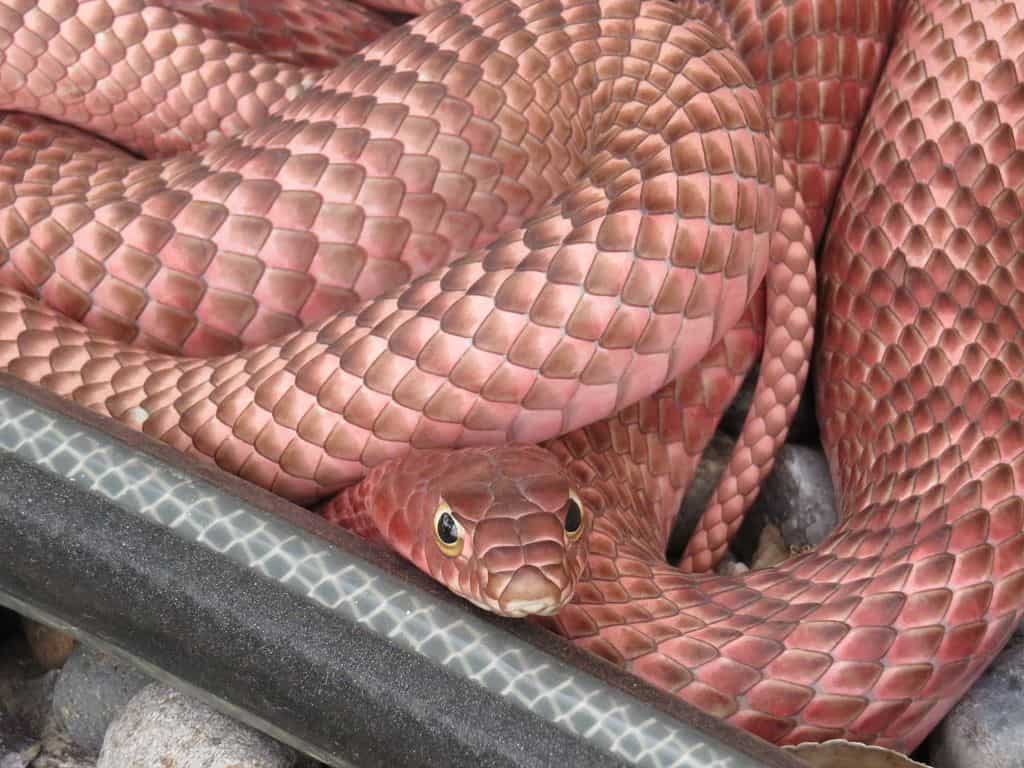
The coachwhip currently has 6 subspecies. Originally, there was 7, but the Baja California coachwhip has since been made fully independent. Of the remaining 6, the eastern coachwhip (Masticophis flagellum flagellum) is easily the most widespread, inhabiting the whole of Florida, all the way to eastern Texas. This is the “standard” coachwhip, with black-bronze shades covered only with subtle lined patterns.
Further west though, you have the red racer, or Masticophis f. piceus (image above). This species is found in California, Arizona, Nevada and Utah, and has evolved a red to pink colour to help it blend with the local soil. The Sonoran coachwhip (Masticophis f. cingulum) is another pink tinged snake, and lives only in Arizona in the USA.
The western coachwhip (Masticophis f. testaceus) covers most of Texas and varies from pink to grey. The fifth subspecies is the rare lined coachwhip (Masticophis f. lineatus), which is found in parts of New Mexico and Arizona, and has a more striking barcode-style pattern.
The 6th and final subspecies is the most westerly: the San Joaquin subspecies (Masticophis flagellum ruddocki), which is mostly bronze to blend in with the parched deserts of California. This subspecies is found exclusively in California, but has abundant populations where it does live.
| 8 | Unusually sharp eyesight |
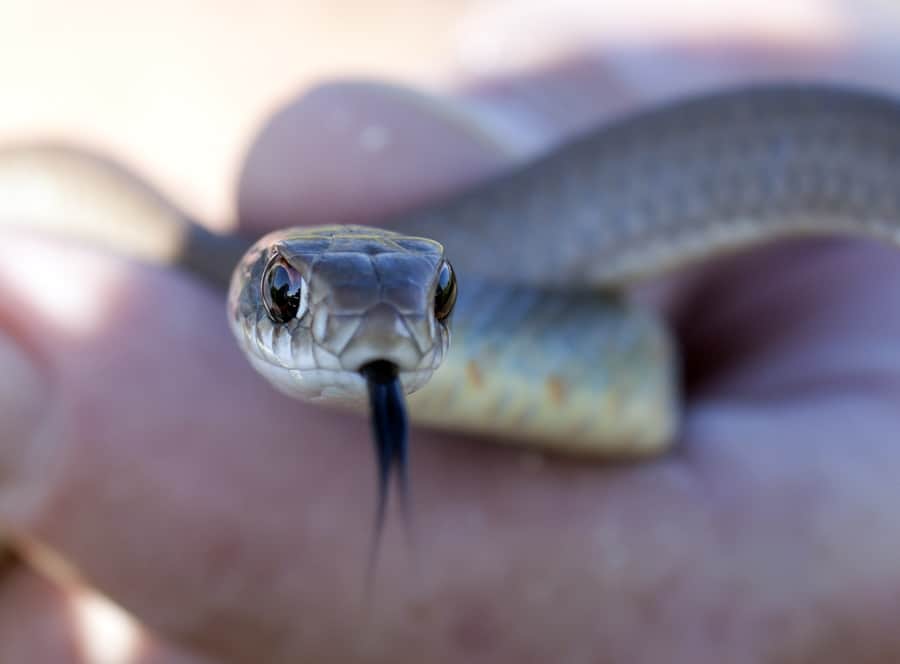
The coachwhip boasts two special features among American snakes: being extremely fast and having exceptionally sharp eyesight. A 2013 study examined the spectacle, a thin membrane covering the eyes of all snake species, which effectively acts as their eyelids.
The scientists detected numerous small blood vessels in this membrane, which expanded and contracted in a regular rhythm throughout the day. Next, they artificially stressed the coachwhips using a “predator”: a human being approaching their enclosure.
The result was a narrowing of the blood vessels in the membrane. The scientists believed that this granted the coachwhips superior vision for escaping, searching for the best route through the undergrowth, and for spotting potential prey on the horizon. Following the stressor, the coachwhips’ eyesight stayed enhanced for several minutes.
The eye of the tiger is constantly referenced, but the eye of the coachwhip may be equally real. The scientists planned to investigate other snake species for the ability, but for now, supersharp eyesight is the reserve of coachwhips.
| 9 | Charges down its prey |
Coachwhips are very curious compared to most US snakes, as they commonly draw their necks back and scan the rolling horizon. This aids them well in their favoured hunting technique. Instead of waiting stealthily in ambush, coachwhips prefer to slither through undergrowth and shrubs directly, in order to flush out lizards hiding there. Then it’s showtime, as the coachwhip uses its immense speed and agility to charge down their prey.
The coachwhip lacks venom and has minimal constricting powers. Instead, it takes down prey using its vicious, thrashing bite style, which rips into flesh and rapidly causes fatal blood loss. This is a back to basics snake, with no fancy gimmicks. A successful hunt isn’t always guaranteed, as small lizards can be just as fast and nimble as coachwhips themselves. But the coachwhip matches this speed with razor sharp reflexes, springing forward the very second a lizard’s body twitches.
With rodents, the coachwhip has a separate problem: sharp incisor teeth. A rat can bite into a coachwhip mid-grip and inflict serious damage. Coachwhips rarely use constriction, but with rodents, they sometimes coil around them and pin them firmly to the ground, to quell all resistance.
| 10 | A lizard-munching snake |
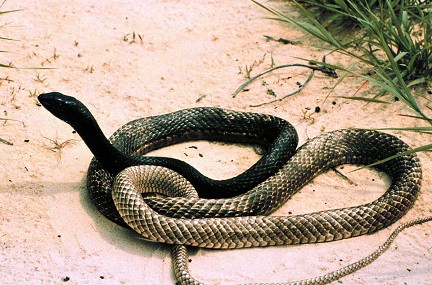
The coachwhip has a non-specific diet, hunting lizards, birds and smaller snakes alike. Generally though, the coachwhip will feed on lizards when it can get them.
Biologists once studied 45 eastern coachwhips close to Georgia. They analysed their stomach contents, and found lizards in 68.9% of individual coachwhips. This was followed by mammals (17.8% of stomachs), insects (8.9%), snakes (8.9%), birds (2.2%), and turtles (2.2%).
Coachwhips aren’t averse to eating weird and obscure meals, sometimes to their ultimate cost. In Hidalgo, New Mexico, a coachwhip was spotted trying to swallow a Texas horned lizard (Phyrnosoma cornutum). The attempt went badly wrong, as the spikes punctured the snake’s throat and killed it.
One particular favourite is the eastern fence lizard (Sceloporus undulatus), which is most common in the southeastern USA. These lizards are usually 10-19cm long and inhabit the edges of forests. They’re pretty stocky and well-built (see above), but that’s no issue for the coachwhip’s stretchy body. There’s one other advantage as well: no spikes!
| 11 | Connections to other snakes |
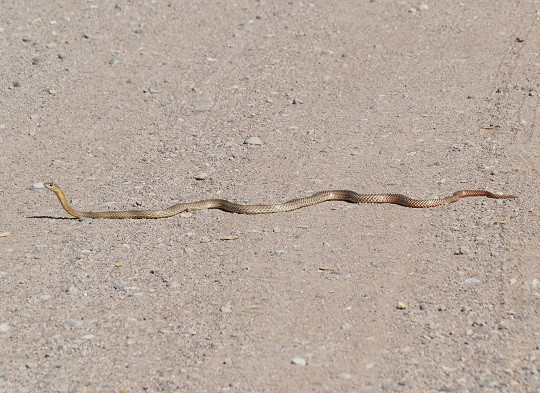
With all the snakes the coachwhip coexists with, it would be miraculous if they never interreacted with any, and interact they certainly do. Firstly, their meals. Coachwhips not only outstrip rattlesnakes in size and speed, but are able to gobble them up. In 2022, the remains of a Mojave rattlesnake were found in a coachwhip’s belly. This is America’s 2nd deadliest rattlesnake species, and the narrow dark rings and segmented rattle sections were still identifiable, yet to be ravaged by digestion.
Coachwhips are also confirmed to prey on the red diamond rattlesnake (Crotalus ruber), which dominates southern California. Coachwhips clearly have strong resistance to pitviper venom. They seem to lack any preference in snake prey, as in Coleman County, Texas, scientists cut open a dead coachwhip and found a rough green snake inside (a harmless grass camouflager).
Despite regularly exceeding 2 metres, coachwhips also become prey for fellow snakes, and none more so than kingsnakes. The speckled kingsnake is a confirmed predator; this overlaps with coachwhips in Kansas, Oklahoma and Texas. The common California kingsnake is a particularly infamous snake-eater, as a large study found that 29% of its diet was snakes. Gopher snakes topped the list, followed by the deadly Pacific rattlesnake, but coachwhips made up 5% of snake prey, alongside the striped whipsnake and western yellow-bellied racer.
Coachwhips are also known to be eaten by Texas coral snakes, eastern coral snakes, and Sonoran whipsnakes…
Meanwhile, their own prey include western diamondback rattlesnakes, Mosauer’s ground snakes, fellow coachwhips, and hognose snakes. These are only the species we’ve confirmed.
The connections between various snakes are endless, and virtually always go unseen by scientists, despite their impressive data-gathering skills.
| 12 | Top prey: six-lined racerunner |
In 2013, another study sought to analyse the coachwhip’s diet. It gathered 29 individual coachwhips from the southeast US, including 27 from North Carolina, and one each from Florida and South Carolina. The stomach contents of each were examined. They matched the study from 1956, as lizards were found in 23 of the 29 snakes examined (79.3%). There was a decent amount of mammals as well, such as juvenile cottontail rabbits, harvest mice, and an unidentified rodent.
Coachwhips not only loves reptiles, but they have a favourite prey of all, at least in the southeast US. Of 29 coachwhips examined, 16 stomachs contained the six-lined racerunner, AKA Aspidoscelis sexlineata. This fast, darting reptile ranges covers the entire US southeast, ranging to New Mexico in the west, and is somehow an irresistible coachwhip snack, a meal which is perfectly tailored to their needs. Of 41 total meals, this reptile accounted for 21 (over 50%).
Other prey included a fence lizard, hatchling eastern box turtles, and surprisingly, two caterpillars. This was the same species, the Tersa Sphinx caterpillar, but was recorded in two separate snakes, in two separate counties, rather than one snake doubling up.
| 13 | Secrets we’ve only just discovered |
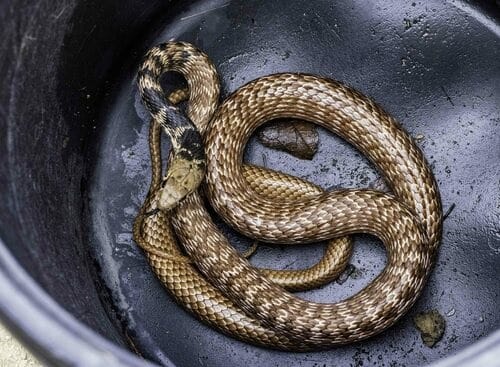
Coachwhips are one of the best researched snakes on Earth, yet cool new discoveries are still being made. In 2013, scientists analysed the coachwhip and black racer (Coluber constrictor) side by side in the southeastern USA.
These species are fairly similar: non-venomous, but fast and aggressive, and flexible in their diet. What would happen when they coexisted? The answer – the black racers became shorter in length. They were far shorter than in areas where no coachwhips existed.
The scientists concluded that coachwhips outcompete black racers for food resources, effectively making them a more powerful snake. Their maximum lengths may have something to do with it, as black racers reach a record of 190.5cm, versus the coachwhip’s 259.1cm.
Another strange sighting occurred in 2007, in Wickenburg, Arizona. Scientists watched with amazement as an adult coachwhip bit a dead branch of a tree. The coachwhip moved away for a moment, but regained its determination and returned to the branch. Eventually, the coachwhip succeeded in swallowing a piece of the branch, and slithered off in satisfaction.
No snake on earth is a herbivore, and even herbivores barely eat tree branches. The scientists believed that the gnarly tree branch resembled a scaly lizard, tricking the coachwhip’s hunger instincts into activating. It makes sense given that coachwhips rely much more on eyesight compared to other snakes.
| 14 | The life story of one coachwhip |
There’s no better way to understand a snake species than to strap a tiny neurotransmitter to its scales, stand back, and watch its progress over the course of an entire year. That’s what scientists did to an adult male coachwhip in Hudspeth County, Texas, located in the northern Chihuahua desert.
The transmitter was applied in July 2008, and the data started flowing in almost immediately. Firstly, the scientists showed just how active this species is. The coachwhip moved an average of 71.6 metres each day, with 12,105 metres moved over the course of the study. That’s already fairly active, but on certain days, the coachwhip would become hyperactive and move over 1000 metres. The longest single distance moved in a day was 1400 metres.
The coachwhip was most active during summer, moving the highest distances in May, June, July, and August (over 120 metres daily). The coachwhip was particularly common on alluvial slopes, and had a strong tendency to hide in rodent burrows. These burrows normally had surface grasses and vegetation at the entrances. The coachwhip was also super-flexible when it came to body temperature. Its mean body temperature over the period was 28.1C, but varied from 16C to 37C.
